Discover 7 hidden attractions, cool sights, and unusual things to do in Bukittinggi (Indonesia). Don't miss out on these must-see attractions: Nurul Iman Mosque of Koto Gadang, Jam Gadang, and Mount Marapi. Also, be sure to include Limpapeh Bridge in your itinerary.
Below, you can find the list of the most amazing places you should visit in Bukittinggi (West Sumatra).
Table of Contents
Nurul Iman Mosque of Koto Gadang
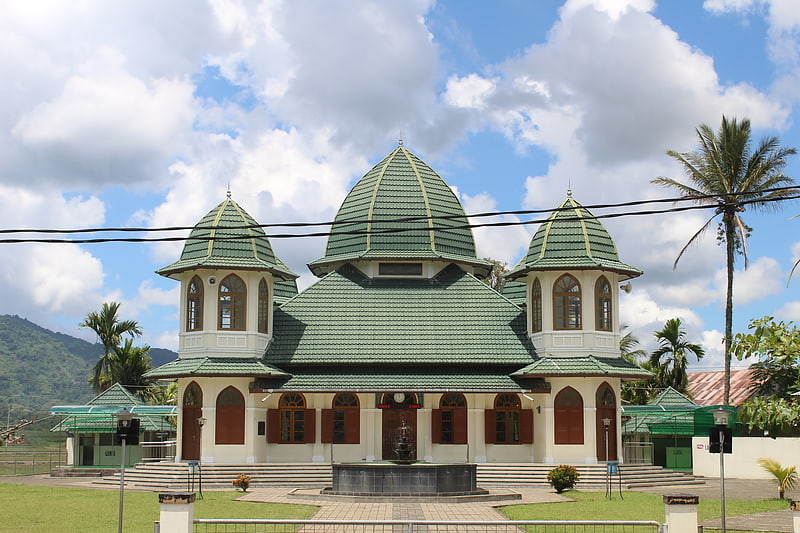
Mosque in Indonesia. Nurul Iman Mosque of Koto Gadang or Tapi Koto Gadang Mosque is one of the oldest mosques in Indonesia, located in Koto Gadang Nagari, Agam Regency, West Sumatra. This mosque is the largest mosque in Koto Gadang area.
Since its foundation in 1856, the mosque has undergone some form of transformation and several repairs. The earliest mosque, known as the Old Jamik Mosque, was typical of Minangkabau style with cone-shaped tapered roofs. However, the mosque was heavily damaged during the Padang Panjang earthquake in 1926.
A few months after the earthquake, the new mosque was soon built by the initiative of Yahya Datuk Kayo, who was a member of the Volksraad representing Minangkabau, and inaugurated the renewed mosque on February 5, 1932. Designed by Yazid Rajo Mangkuto, the shape of the new mosque building was totally changed from its predecessor. However, the building of the mosque was destroyed again by the earthquake in March 2007. Since then the mosque was restored with the form similar to the pre-earthquake one.[1]
Jam Gadang

Jam Gadang is a clock tower, major landmark, and tourist attraction in the city of Bukittinggi, West Sumatra, Indonesia. It is in the centre of the city, near the main market, Pasar Ateh. It has large clocks on each face.[2]
Address: Jalan Jam Gadang, 26152 Bukit Tinggi
Mount Marapi
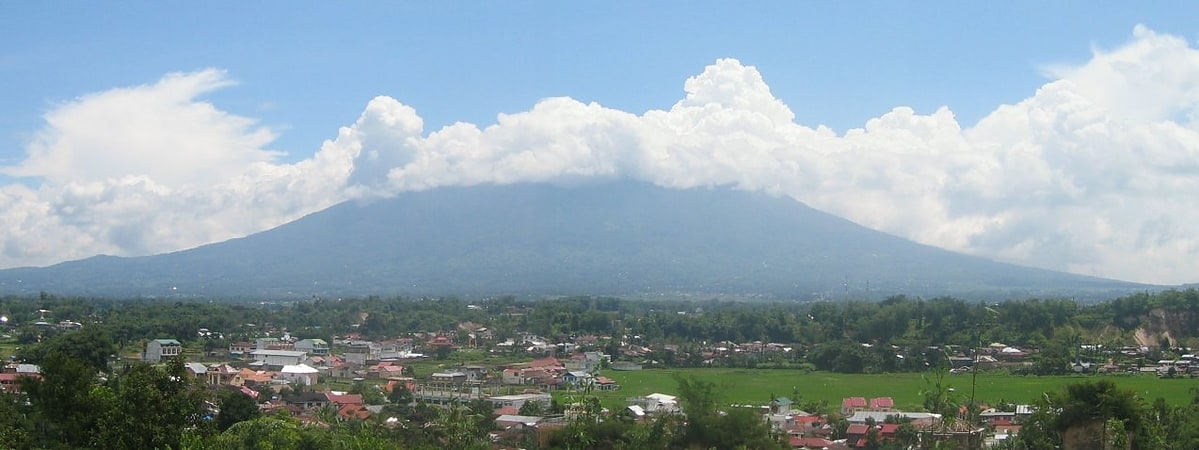
Also known as: Gunung Marapi
Complex volcano in Indonesia. Marapi is a complex volcano in West Sumatra, Indonesia. Its name means Mountain of Fire, and it is the most active volcano in Sumatra. Its elevation is 2,891.3 metres. A number of cities and towns are situated around the mountain, including Bukittinggi, Padang Panjang and Batusangkar.
According to legend, the mountain is the site first settled by the Minangkabau people after their ship landed on the mountain when it was the size of an egg and surrounded by water. There are large numbers of upright burial stones in the region which are oriented in the direction of the mountain, indicating its cultural significance.[3]
Limpapeh Bridge
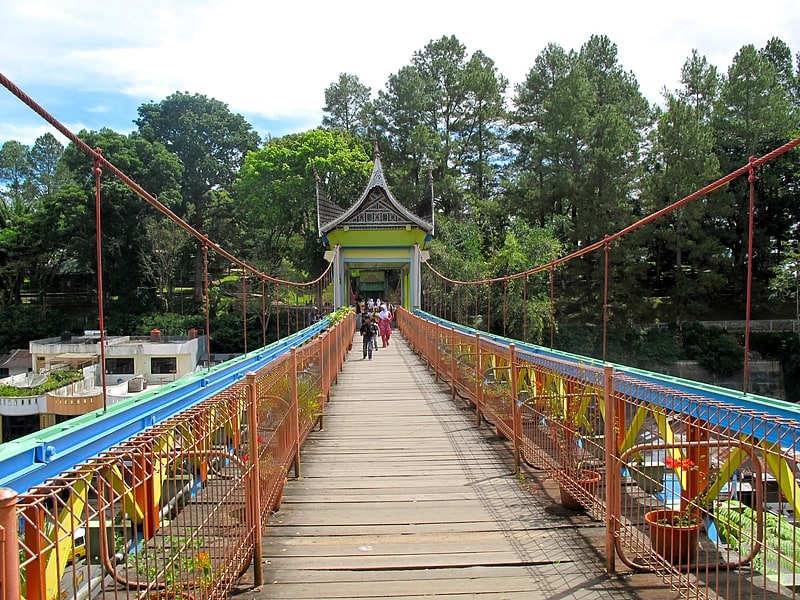
Also known as: Jembatan Limpapeh
Bridge. Limpapeh bridge is a bridge in over Ahmad Yani street, Bukittinggi, West Sumatra, Indonesia. This bridge has a length of 90 metres and width of 3.8 metres. Fort de Kock fortification is connected to the Bukittinggi zoo by this bridge.[4]
Fort de Kock
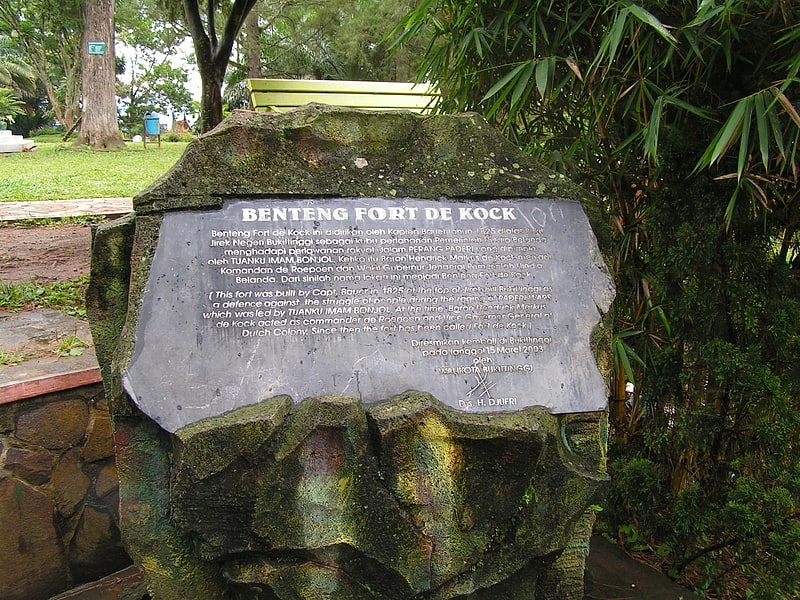
Fortress in Bukittinggi, Indonesia. Fort de Kock was a 19th-century Dutch sconce fortification established over a hill in Bukittinggi, West Sumatra, Indonesia. Around the fortification, a new settlement grew, which eventually grew into the city of Bukittinggi, the second largest city in West Sumatra. Although the remnants of the mound and some cannons can still be seen, the original buildings on top of the sconce has been demolished.[5]
Jami Mosque of Taluak
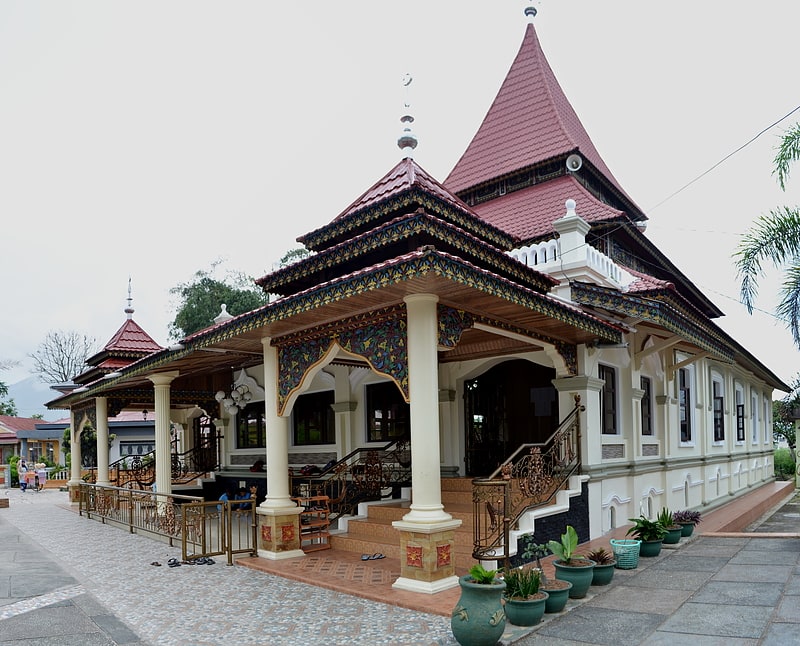
Also known as: Masjid Jamik Taluak Bukittinggi
Mosque in Indonesia. Jami Mosque of Taluak is one of the oldest mosques in Indonesia, located in Taluak IV Suku Nagari, Banuhampu District, Agam Regency, West Sumatra. The location of the mosque is close to the border of Bukittinggi, thus it is also known as Jamik Taluak Mosque Bukittinggi.
Construction of the mosque was initiated by Haji Abdul Majid in 1860, which was originally made with wooden roofs. The mosque had suffered some significant damages caused by earthquakes, most recently the 2007 Sumatra earthquake which resulted in severe damages of the mosque. Despite several improvements and repairing however, authenticity of the mosque is well maintained.
The architecture of the mosque as a whole is influenced by the Minangkabau style. Arabic influence came later with the construction of minarets and facade. With its architecture, the mosque also became one of the most photographed mosques during the time of Dutch Colonization, and the photos are collected by Tropenmuseum in Amsterdam, Netherlands today.
Nowadays, apart from being used for Islamic worshiping activities, this one-floor mosque is also used as a place for religious education for the community. It also has become one of the most well known tourist attractions in Agam Regency as well as in the city of Bukittinggi.
Jamik Taluak Mosque Bukittinggi is currently under the management of the Archaeological Heritage Conservation Agency oversees West Sumatra, Riau and Riau Islands.[6]
Lobang Jepang
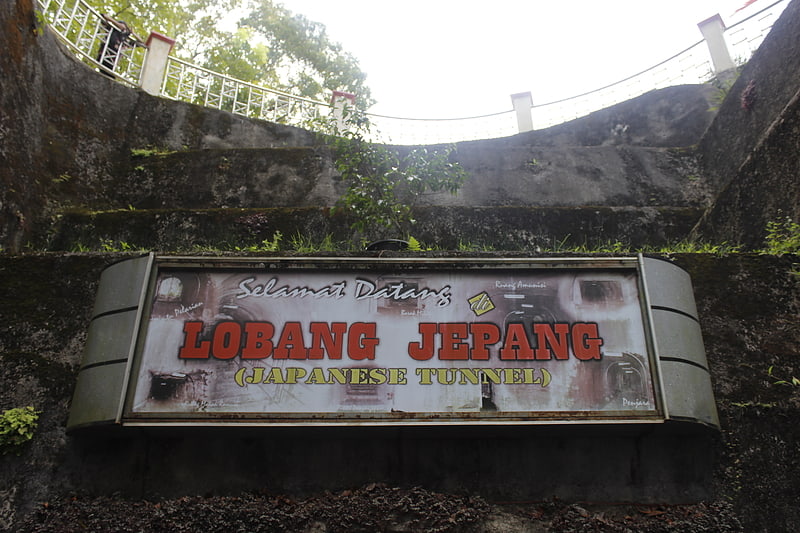
Historical landmark in Indonesia. Lobang Jepang or Lubang Jepang is an underground military complex, which is now one of the historical tourist attraction in the city of Bukittinggi, West Sumatra in Indonesia.
The Japanese tunnel is a protection tunnel built by the Japanese occupying army around 1942 for defense purposes, which was fully completed in June, 1944. It was first discovered in the early 1950s and opened to tourists in 1994. As is known, during World War II in 1942 Japanese occupied force had begun to be pressured by Allied forces, and started to construct many hiding tunnels across the archipelago of then Dutch East Indies, not only in Bukittinggi, but also in cities of Bandung and Biak, as well as other places in Indonesia.[7]